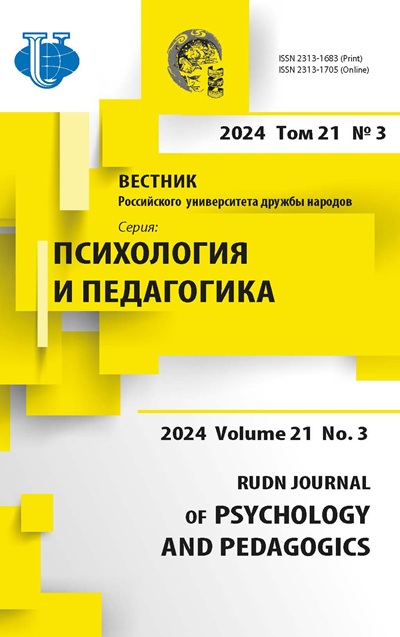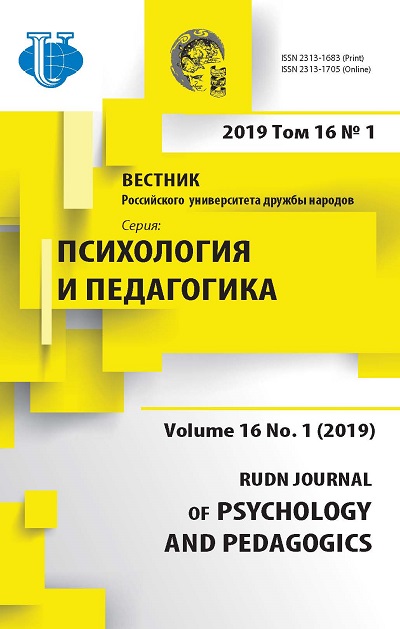Attitude toward Dental Health and Treatment in Patients with Medical and Non-Medical Education
- Authors: Sitkina E.V1, Tregubenko I.A1, Belyaeva E.A1, Isaeva E.R1
-
Affiliations:
- Pavlov First Saint Petersburg State Medical University
- Issue: Vol 16, No 1 (2019)
- Pages: 71-87
- Section: CLINICAL PSYCHOLOGY AND PSYCHOPHYSIOLOGY
- URL: https://journals.rudn.ru/psychology-pedagogics/article/view/20828
- DOI: https://doi.org/10.22363/2313-1683-2019-16-1-71-87
Cite item
Full Text
Abstract
The article discusses the differences in attitudes towards dental health among persons with and without medical education. The authors described the criteria for assessing the quality of dental care, the preferred quality of a dentist and causes dental phobia in the adult population, as well as highlighted ways to improve compliance and reduce fear and anxiety before visiting the dentist. A total of 88 apparently healthy respondents who do not pass dental treatment at the time of the study (52 women and 36 men) took part in the study (the average age is 32 ± 12.5 years). The following techniques were used: (1) the survey Attitude to Health by R.A. Berezovskaya for assessing the respondents’ attitude to their own health (emotional, behavioral, cognitive, and valuemotivational scales); (2) the Life Quality Scale by N.E. Vodopianova for the assessment of the general life quality index and the self-assessment of the respondents life quality in such categories as: work, personal achievements, health, communication with relatives, support, optimism, tension, self-control, negative emotions; (3) the questionnaire Attitude to dental health developed for research at the Department of General and Clinical Psychology of Pavlov First Saint Petersburg State Medical University. Key research findings is: (1) most patients prefer an empathic-non-prescriptive type of dentist; (2) for most patients are important professional and communication skills of the dentist; (3) there are differences in attitudes towards dental health in patients with and without medical education.
About the authors
Evgenya V Sitkina
Pavlov First Saint Petersburg State Medical University
Author for correspondence.
Email: sitkina_evgenya@mail.ru
Assistant of General and Clinical Psychology Department, Pavlov First Saint Petersburg State Medical University
6-8 Lva Tolstogo St., Saint Petersburg, 197022, Russian FederationIlya A Tregubenko
Pavlov First Saint Petersburg State Medical University
Email: ia2312@yandex.ru
Ph.D. in Psychology, Associate Professor of General and Clinical Psychology Department, Pavlov First Saint Petersburg State Medical University
6-8 Lva Tolstogo St., Saint Petersburg, 197022, Russian FederationElena A Belyaeva
Pavlov First Saint Petersburg State Medical University
Email: helenap95@mail.ru
6th year student of the Faculty of Clinical Psychology, Pavlov First Saint Petersburg State Medical University
6-8 Lva Tolstogo St., Saint Petersburg, 197022, Russian FederationElena R Isaeva
Pavlov First Saint Petersburg State Medical University
Email: isajeva@yandex.ru
Doctor Sc. of Psychology, Head of the General and Clinical Psychology Department, Pavlov First Saint Petersburg State Medical University
6-8 Lva Tolstogo St., Saint Petersburg, 197022, Russian FederationReferences
- Beaton, L., Freeman, R., & Humphris, G. (2014). Why are people afraid of the dentist? Observations and Explanations. Medical Principles and Practice, 23, 295—301. doi: 10.1159/000357223
- Berggren, U., & Meynert, G. (1984). Dental fear and avoidance — causes, symptoms and consequences. Journal of the American Dental Association, 2(109), 247—251. doi: 10.14219/jada.archive.1984.0328
- Chigarina, S.E. (2016). The stomatologic health of students. International Journal of Applied and Fundamental Research, 10(2), 243—245. (In Russ.)
- Clay, R.A. (2016). Drilling down on dental fears: A growing number of psychologists are helping patients overcome dental-related anxiety and other oral health concerns. APA. Monitor of Psychology, 47(3). Retrieved from: http://www.apa.org/monitor/2016/03/dental-fears.aspx
- Crego, A., Carrillo-Diaz, M., & Armfield, J.M. (2014). From public mental health to community oral health: The impact of dental anxiety and fear on dental status. Front Public Health, (2), 16. Retrieved from: http://www.ncbi.nlm.nih.gov/pmc/articles/PMC3937873/ doi: 10.3389/fpubh.2014.00016
- Danilov, D. (2014). Therapeutic collaboration (compliance): Content of the definition, mechanisms of formation, and methods of optimization. Neurology, Neuropsychiatry, Psychosomatics, (2), 4—12. (In Russ.)
- Firsova, I.V., Mikhalchenko V.F., & Makedonova Yu.A. (2014). The compliance as a result of the rational approach to the treatment in stomatological practice. The Russian Dentistry, (1), 46—48. (In Russ.)
- Gazhva, S.I., Gazhva, Yu.V., & Guluev, R.S. (2012). Quality of life of patients with oral cavity diseases (literary review). Modern Problems of Science and Education, (4). Retrieved from: http://scienceeducation.ru/ru/article/view?id = 6466 (In Russ.)
- Hathiwala, S., Acharya, S., & Patil, S. (2015). Personality and psychological factors: Effects on dental beliefs. Journal of Indian Society of Pedodontics and Preventive Dentistry, 33(2), 88—92. doi: 10.4103/0970-4388.155110
- Iaremenko, A.I., Isaeva, E.R., Kolegova, T.E., Sitkina, E.V., & Vasilieva, J.V. (2018). Satisfaction with quality of life in patients with minimum cicatricial damage of the face and neck. Clinical Psychology and Special Education, 7 (1), 75—90. doi: 10.17759/cpse.2018070106 (In Russ.)
- Ismailov, A.A., & Karataeva, A.M. (2016). Marketing in the dental organization. Young Scientist, (7), 390—395. (In Russ.)
- Macri, D. (2016). The expert advice: Dental patient compliance hinges on effective communication strategies. Registered Dental Hygienists Magazine. Retrieved from: http://www.rdhmag.com/articles/ print/volume-36/issue-6/contents/the-expert-advice.html
- Nikiforov, G.S. (2005). Pracktikym po psichologii zdorov’ya. Saint Petersburg: Piter Publ. (In Russ.)
- RBC. (2016). Review of Paid Medical Services and a Healthy Lifestyle. The Market for Dental Services. Retrieved from: http://marketing.rbc.ru/reviews/medicine2013/chapter_2_3.shtml (In Russ.)
- RBC. (2017). Research of the Market of Dentistry in Saint Petersburg in 2017. Retrieved from: https:// business-planner.ru/articles/analitika/issledovanie-rynka-stomatologii-sankt-peterburga-v-2017godu.html (accessed: 10.07.2018). (In Russ.)
- Reisine, S.T., Fertig, J., & Leder, S. (1989). Impact of dental conditions on patient’s quality of life. Community Dent Oral Epidemiology, (17), 7—10. doi: 10.1111/j.1600-0528.1989.tb01816
- Sarkisov, A.A. (2014). Psychologicheskie aspecty formirovaniya vzaimootnoscheniy vracha i pacienta na stomatologicheskom prieme. Ph.D in Medical Thesis. Moscow. (In Russ.)
- Savina, E.A., Bulkina, N.V., Lomakina, D.O., & Olevskaya, O.A. (2011). Deontology of a therapeutist:
- psychological and therapeutic ways of behavior during dental examination and treatment. Saratov Journal of Medical Scientific Research, 7(3), 683—689. (In Russ.)
- Sven, G. Carlsson, Boman, U.W., & Magnus, J.L. (2013). Dental anxiety — a joint interest for dentists and psychologists. European Journal of Oral Sciences, (121), 221—224. doi.org/10.1111/eos.12046
- Timokhova, E.S., & Gritskevich, E.R. (2018). Impact of the dental status of the oral cavity on the level of quality of life. Sakharov Readings 2018: Environmental Problems of the 21st Century (pp. 349—350). Minsk. (In Russ.)
- Vermaire, J.H., & van Excel N.J.A. (2017). Parental attitudes towards oral health and caries-risk in their children. International Journal of Dental Hygiene, 16(2), 241—248. doi: 10.1111/idh.12296
















